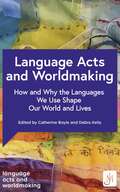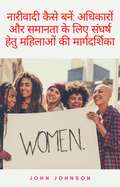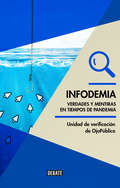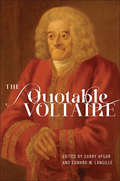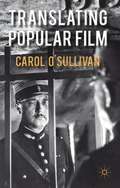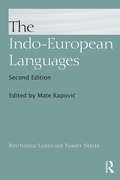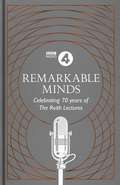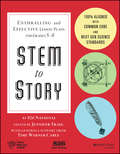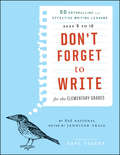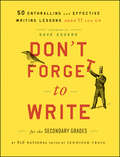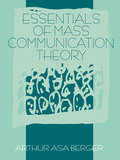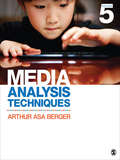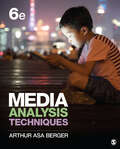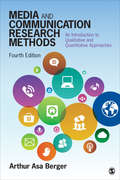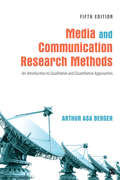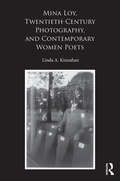- Table View
- List View
Language Acts and Worldmaking: How and Why the Languages We Use Shape Our World and Our Lives
byCollectively authored by the Language Acts and Worldmaking team, this defining volume offers reflective narratives on research, theory and practice over the course of the flagship project of the same name, funded by the Arts and Humanities Research Council's Open World Research Initiative. It returns to the project's key principles - that our words make worlds and we are agents in worldmaking - analyses the practices and outcomes of collaborative working, and looks to the future by offering concrete ideas for how the work they have done can now continue to do its work in the world.Focusing on the key research strands, this volume looks at the role of the language teacher as a mediator between languages and cultures, worldmaking in modern languages, translation and the imagination, languages and hospitality, digital mediations, and how words change and make worlds. Critically, it analyses the impact on communities of living in multilingual cities, and the ways in which learning a first language, and then a second, and so on, plays a crucial role in our ability to understand our culture in relation to others and to appreciate the ways in which they are intertwined.Specific aims are to: · propose new ways of bridging the gaps between those who teach and research languages and those who learn and use them in everyday contexts from the professional to the personal · put research into the hands of wider audiences · share a philosophy, policy and practice of language teaching and learning which turns research into action · provide the research, experience and data to enable informed debates on current issues and attitudes in language learning, teaching and research · share knowledge across and within all levels and experiences of language learning and teaching · showcase exciting new work that derives from different types of community activity and is of practical relevance to its audiences · disseminate new research in languages that engages with diverse communities of language practitioners.
Language Acts and Worldmaking: How and Why the Languages We Use Shape Our World and Our Lives
byCollectively authored by the Language Acts and Worldmaking team, this defining volume offers reflective narratives on research, theory and practice over the course of the flagship project of the same name, funded by the Arts and Humanities Research Council's Open World Research Initiative. It returns to the project's key principles - that our words make worlds and we are agents in worldmaking - analyses the practices and outcomes of collaborative working, and looks to the future by offering concrete ideas for how the work they have done can now continue to do its work in the world.Focusing on the key research strands, this volume looks at the role of the language teacher as a mediator between languages and cultures, worldmaking in modern languages, translation and the imagination, languages and hospitality, digital mediations, and how words change and make worlds. Critically, it analyses the impact on communities of living in multilingual cities, and the ways in which learning a first language, and then a second, and so on, plays a crucial role in our ability to understand our culture in relation to others and to appreciate the ways in which they are intertwined.Specific aims are to: · propose new ways of bridging the gaps between those who teach and research languages and those who learn and use them in everyday contexts from the professional to the personal · put research into the hands of wider audiences · share a philosophy, policy and practice of language teaching and learning which turns research into action · provide the research, experience and data to enable informed debates on current issues and attitudes in language learning, teaching and research · share knowledge across and within all levels and experiences of language learning and teaching · showcase exciting new work that derives from different types of community activity and is of practical relevance to its audiences · disseminate new research in languages that engages with diverse communities of language practitioners.
नारीवादी कैसे बनें: अधिकारों और समानता के लिए संघर्ष हेतु महिलाओं की मार्गदर्शिका
by लॉरेन एलेक्सापुस्तक के बारे में – -क्या आप कभी अपने लिंग की वजह से हिंसा,घृणा,उत्पीड़न या पीड़ा के शिकार हुए हैं ? -नारीवादी होने या नारीवादी आदर्शों पर चलने का मतलब है उन चीजों के बारे में संघर्ष करना जो मायने रखती हैं । -यदि आप अपने अधिकारों के लिए संघर्ष के बारे में और जानना चाहते हैं और महिलाओं के अधिकारों के लिए संघर्ष में सहायता करना चाहते हैं तो यह मार्गदर्शिका आपके लिए है । -जानिये कि एक नारीवादी कैसे बनें -जानिये कि अपने अधिकारों के लिए संघर्ष कैसे करें -जानिये कि समानता और समान वेतन के लिए संघर्ष कैसे करें -और भी बहुत कुछ जानिये कि जहां आपकी बहुत अधिक ज़रुरत है वहां मनुष्यता की सहायता कर आप इतिहास में सही पक्ष के साथ किस तरह खड़े हो सकते हैं। अस्वीकृति इस पुस्तक की विषयवस्तु की सटीकता, पूर्णता और औचित्य के बारे में यह लेखक और, या अधिकारों के स्�
Infodemia: Mentiras y verdades en tiempos de pandemia
by OjoPúblico .Un e-book que investiga y esclarece las falsas informaciones nacidas en tiempos de pandemia El equipo de investigación de OjoPúblico presenta en este e-book un análisis minucioso de la información difundida en los medios de comunicación y las redes sociales sobre los impactos del COVID-19 para evitar la propagación de la desinformación que contamina a todos los peruanos y peruanas. Gracias al ejercicio del Factchecking, OjoPúblico logra desbaratar las noticias falsas y las contrapone con información verídica y data comprobada para evitar que las Fakenews sean la próxima pandemia.
The Quotable Voltaire
by François-Marie Arouet (1694-1778)The author of more than 2,000 books and pamphlets, Voltaire (François-Marie Arouet, 1694-1778) was one of the most prolific writers of the eighteenth century, and also one of the wittiest and most insightful. This unique collection of over 800 of Voltaire’s wisest passages and choicest bons mots runs the gamut on topics from adultery to Zoroaster, in both English and French. Drawing from a wide range of his publications, private letters, and remarks recorded by his contemporaries, The Quotable Voltaire includes material never before gathered in a single volume. English translations appear alongside the original French, and each quote is thoroughly indexed and referenced, with page numbers for both the first known publication edition of each entry and the most recent edition of Voltaire’s works. The book also features over 400 quotes about Voltaire, including commentary by eighteenth-century luminaries like Samuel Johnson, Catherine the Great, Casanova, and John Adams, as well as an eclectic assortment of modern-day personages ranging from Winston Churchill and Jorge Luis Borges to Mae West and Mike Tyson. Lavishly illustrated with nearly three dozen images of Voltaire-related art, this collection opens with a scholarly essay that recounts the great man’s life and reflects on his outsized influence on Western culture. Whether you are a Voltaire scholar or a neophyte, The Quotable Voltaire is the perfect introduction to a brilliant mind.
Hannah Whitman Heyde: The Complete Correspondence
by Hannah Whitman ["1823-1908"]The correspondence of Hannah Whitman Heyde (1823-1908), younger sister of poet Walt Whitman, provides a rare glimpse into the life of a nineteenth-century woman. Married to well-known Vermont landscape artist Charles Louis Heyde (1820-1892), Hannah documented in letters to her mother, Louisa Van Velsor Whitman (1795-1873), and other family members, her lived experience of ongoing physical and emotional abuse at the hands of her husband. Hannah has long been characterized in biographical and scholarly studies of Whitman’s family as a neurotic and a hypochondriac—a narrative promulgated by Heyde himself—but Walt Whitman carefully preserved his sister’s letters, telling his literary biographer that his intention was to document her plight. Hannah’s complete letters, gathered here for the first time and painstakingly edited and annotated by Maire Mullins, provide an important counternarrative, allowing readers insight into the life of a real nineteenth-century woman, sister, and wife to famous men, who endured and eventually survived domestic violence.
Translating Popular Film
by Carol O'Sullivan 2011A ground-breaking study of the roles played by foreign languages in film and television and their relationship to translation. The book covers areas such as subtitling and the homogenising use of English, and asks what are the devices used to represent foreign languages on screen?
The Indo-European Languages
by Mate Kapovi 263 Anna Giacalone Ramat Paolo RamatThe Indo-European Languages presents a comprehensive survey of the individual languages and language subgroups within this language family. With over four hundred languages and dialects and almost three billion native speakers, the Indo-European language family is the largest of the recognized language groups and includes most of the major current languages of Europe, the Iranian plateau and the Indian subcontinent. Written by an international team of experts, this comprehensive, single-volume tome presents in-depth discussions of the historical development and specialized linguistic features of the Indo-European languages. This unique resource remains the ideal reference for advanced undergraduate and postgraduate students of Indo-European linguistics and languages, but also for more experienced researchers looking for an up-to-date survey of separate Indo-European branches. It will be of interest to researchers and anyone with an interest in historical linguistics, linguistic anthropology and language development.
Remarkable Minds: A Celebration of the Reith Lectures
by BBC Radio 4IDEAS THAT HAVE THE POWER TO CHANGE THE WORLDThe best of an extraordinary 70 year archive, gathered in one volume for the first time. The prestigious BBC Reith Lectures have been enriching the world with new ideas since 1948. Every year, a world-leading thinker is invited to speak on a topic of their choosing, spanning art, science, nature, technology, history, religion, society, culture, politics and much more. Unearthing forgotten gems as well as sharing the latest in intellectual thought, Remarkable Minds is a time capsule into our changing world that provides wise words for turbulent times. With a foreword by Anita Anand, presenter of the Reith Lectures, and an introduction by Gwyneth Williams, controller of Radio 4, 2010-2019.
Remarkable Minds: A Celebration of the Reith Lectures
by BBC Radio 4IDEAS THAT HAVE THE POWER TO CHANGE THE WORLDThe best of an extraordinary 70 year archive, gathered in one volume for the first time. The prestigious BBC Reith Lectures have been enriching the world with new ideas since 1948. Every year, a world-leading thinker is invited to speak on a topic of their choosing, spanning art, science, nature, technology, history, religion, society, culture, politics and much more. Unearthing forgotten gems as well as sharing the latest in intellectual thought, Remarkable Minds is a time capsule into our changing world that provides wise words for turbulent times. With a foreword by Anita Anand, presenter of the Reith Lectures, and an introduction by Gwyneth Williams, controller of Radio 4, 2010-2019.
STEM to Story
by 826 NationalBring STEM to life for students with zombies, rockets, celebrities, and moreSTEM to Story: Enthralling and Effective Lesson Plans for Grades 5-8 inspires learning through fun, engaging, and meaningful lesson plans that fuse hands-on discovery in science, technology, engineering, and math (STEM) with creative writing. The workshop activities within the book are the innovative result of a partnership between 826 National's proven creative writing model and Time Warner Cable's Connect a Million Minds, an initiative dedicated to connecting young people to the wonders of STEM through hands-on learning. Authentically aligned with both the Common Core State Standards and the Next Generation Science Standards, this book provides teachers, after-school and out-of-school providers, and parents with field-tested lessons, workshops, and projects designed by professionals in each field. Including reflective observations by arts and science celebrities like Jon Scieszka, Mayim Bialik, and Steve Hockensmith, lessons feature bonus activities, fun facts, and teaching points for instructors at every level. These quirky, exploratory lessons will effectively awaken student imaginations and passions for both STEM and creative writing, encourage identity with scientific endeavors, and make both science and writing fun.Grades five through eight is the critical period for engaging students in STEM, and this book is designed specifically to appeal to - and engage - this age group. The guided curricula fosters hands-on discovery, deep learning, and rich inquiry skills while feeling more like play than school, and has proven popular and effective with both students and teachers.Awaken student imagination and get them excited about STEMFuse creative writing with STEM using hands-on activitiesMake scientific principles relevant to students' livesInspire students to explore STEM topics furtherThe demand for STEM workers is closely linked to global competitiveness, and a successful future in STEM depends upon an early introduction to the scientific mindset. The challenge for teachers is to break through students' preconceptions of STEM fields as "hard" or "boring," to show them that STEM is everywhere, it's relevant, and it's loads of fun. For proven lesson plans with just a dash of weird, STEM to Story is a dynamic resource, adaptable and applicable in school, after school, and at home.
Don't Forget to Write for the Elementary Grades
by 826 National StaffCreative strategies for getting young students excited about writing Don't Forget to Write for the Elementary Grades offers 50 creative writing lesson plans from the imaginative and highly acclaimed 826 National writing labs. Created as a resource to reach all students (even those most resistant to creative writing), the lessons range from goofy fun (like "The Other Toy Story: Make Your Toys Come to Life") to practical, from sports to science, music to mysteries. These lessons are written by experts, and favorite novelists, actors, and other celebrities pitched in too. Lessons are linked to the Common Core State Standards. A treasure trove of proven, field-tested lessons to teach writing skills Inventive and unique lessons will appeal to even the most difficult-to-reach students 826 National has locations in eight cities: San Francisco, New York, Los Angeles, Ann Arbor, Chicago, Seattle, Boston, and Washington DC 826 National is a nonprofit organization, founded by Dave Eggers, and committed to supporting teachers, publishing student work, and offering services for English language learners.
Don't Forget to Write for the Secondary Grades
by 826 National StaffFantastic strategies for getting high school students excited about writing This book offers 50 creative writing lesson plans from the imaginative and highly acclaimed 826 National writing labs. Created as a resource to reach all students (even those most resistant to creative writing), the off-beat and attention-grabbing lessons include such gems as "Literary Facebooks," where students create a mock Facebook profile based on their favorite literary character, as well as highly practical lessons like the "College Application Essay Boot Camp." These writing lessons are written by experts--and favorite novelists, actors, and other entertainers pitched in too. Road-tested lessons from a stellar national writing lab Inventive and unique lessons that will appeal to even the most difficult-to-reach students Includes a chart linking lessons to the Common Core State Standards 826 National is an organization committed to supporting teachers, publishing student work, and offering services for English language learners.
Essentials of Mass Communication Theory
by Dr Berger Arthur AThis comprehensive resource on mass communication theory is structured around the key conceptual areas of text, audience, media, production and society. Using illustrations from popular genres - particularly film and television - Arthur Asa Berger combines his broad knowledge of the mass communications field with his unique ability to translate difficult theories and models into comprehensible terms and accessible language. He concludes with suggestions for further work and discussion plus an up-to-date bibliography, making this an excellent introduction for students of communication.
Media Analysis Techniques
by Dr Berger Arthur AIn the Fifth Edition of Media Analysis Techniques, author Arthur Asa Berger provides students with a clearly written, user-friendly, and hands-on guide to media criticism. He empowers readers to make their own analyses of the media rather than just accepting the interpretations of others. The book first examines four techniques of media interpretation—semiotic theory, Marxist theory, psychoanalytic theory, and sociological theory—that Berger considers critical for creative people to acknowledge if they are to understand how their creations translate to the real world. Application chapters then link popular culture to these four theories. Written in an accessible style that demystifies complex concepts, the book also includes a comprehensive glossary, study guides, and the author’s own illustrations.
Media Analysis Techniques (Commtext Ser. #No. 10)
by Dr Berger Arthur AIn the Sixth Edition of Media Analysis Techniques, author Arthur Asa Berger once again provides students with a clearly written, user-friendly, hands-on guide to media criticism. The book empowers readers to make their own analyses of the media rather than just accept how others interpret the media. Media Analysis Techniques begins by examining four techniques of media interpretation - semiotic theory, Marxist theory, psychoanalytic theory, and sociological theory - that Berger considers critical for creative people to acknowledge if they are to understand how their creations translate to the real world. Application chapters then link popular culture to these four theories. Written in an accessible style that demystifies complex concepts, Media Analysis Techniques includes a glossary, study guides, and the author's own illustrations.
Media Analysis Techniques (Commtext Ser. #No. 10)
by Dr Berger Arthur AIn the Sixth Edition of Media Analysis Techniques, author Arthur Asa Berger once again provides students with a clearly written, user-friendly, hands-on guide to media criticism. The book empowers readers to make their own analyses of the media rather than just accept how others interpret the media. Media Analysis Techniques begins by examining four techniques of media interpretation - semiotic theory, Marxist theory, psychoanalytic theory, and sociological theory - that Berger considers critical for creative people to acknowledge if they are to understand how their creations translate to the real world. Application chapters then link popular culture to these four theories. Written in an accessible style that demystifies complex concepts, Media Analysis Techniques includes a glossary, study guides, and the author's own illustrations.
Media and Communication Research Methods: An Introduction to Qualitative and Quantitative Approaches
by Dr Berger Arthur AMedia and Communication Research Methods, Fourth Edition is a concise and practical text designed to give students a step-by-step introduction to conducting media and communication research. Offering real-world insights along with the author’s signature animated style, this text makes the discussion of complex qualitative and quantitative methods easy to comprehend. Packed with detailed examples and practical exercises, the Fourth Edition of this bestselling introductory text includes a new chapter on discourse analysis; expanded discussion of social media, expanded coverage of the research process, and more. Ideal for undergraduate and graduate students conducting research for the first time, this accessible text will help students understand, practice, and master media and communication research.
Media and Communication Research Methods: An Introduction to Qualitative and Quantitative Approaches
by Dr Berger Arthur AMedia and Communication Research Methods, Fourth Edition is a concise and practical text designed to give students a step-by-step introduction to conducting media and communication research. Offering real-world insights along with the author’s signature animated style, this text makes the discussion of complex qualitative and quantitative methods easy to comprehend. Packed with detailed examples and practical exercises, the Fourth Edition of this bestselling introductory text includes a new chapter on discourse analysis; expanded discussion of social media, expanded coverage of the research process, and more. Ideal for undergraduate and graduate students conducting research for the first time, this accessible text will help students understand, practice, and master media and communication research.
Media and Communication Research Methods: An Introduction to Qualitative and Quantitative Approaches
by Dr Berger Arthur AThis step-by-step introduction to conducting media and communication research offers practical insights along with Arthur Asa Berger’s signature lighthearted style to make discussion of qualitative and quantitative methods easy to comprehend. The Fifth Edition of Media and Communication Research Methods includes a new chapter on discourse analysis; expanded discussion of social media, including discussion of the ethics of Facebook experiments; and expanded coverage of the research process with new discussion of search strategies and best practices for analyzing research articles. Ideal for research students at both the graduate and undergraduate level, this proven book is clear, concise, and accompanied by just the right number of detailed examples, useful applications, and valuable exercises to help students to understand, and master, media and communication research.
Media and Communication Research Methods: An Introduction to Qualitative and Quantitative Approaches
by Dr Berger Arthur AThis step-by-step introduction to conducting media and communication research offers practical insights along with Arthur Asa Berger’s signature lighthearted style to make discussion of qualitative and quantitative methods easy to comprehend. The Fifth Edition of Media and Communication Research Methods includes a new chapter on discourse analysis; expanded discussion of social media, including discussion of the ethics of Facebook experiments; and expanded coverage of the research process with new discussion of search strategies and best practices for analyzing research articles. Ideal for research students at both the graduate and undergraduate level, this proven book is clear, concise, and accompanied by just the right number of detailed examples, useful applications, and valuable exercises to help students to understand, and master, media and communication research.
Mina Loy, Twentieth-Century Photography, and Contemporary Women Poets
by Linda A. KinnahanIn Mina Loy, Twentieth-Century Photography, and Contemporary Women Poets, Linda A. Kinnahan explores the making of Mina Loy’s late modernist poetics in relation to photography’s ascendance, by the mid-twentieth century, as a distinctively modern force shaping representation and perception. As photography develops over the course of the century as an art form, social tool, and cultural force, Loy’s relationship to a range of photographic cultures emerging in the first half of the twentieth century suggests how we might understand not only the intriguing work of this poet, but also the shaping impact of photography and new technologies of vision upon modernist poetics. Framing Loy’s encounters with photography through intersections of portraiture, Surrealism, fashion, documentary, and photojournalism, Kinnahan draws correspondences between Loy’s late poetry and visual discourses of the body, urban poverty, and war, discerning how a visual rhetoric of gender often underlies these mappings and connections. In her final chapter, Kinnahan examines two contemporary poets who directly engage the camera’s modern impact –Kathleen Fraser and Caroline Bergvall – to explore the questions posed in their work about the particular relation of the camera, the photographic image, and the construction of gender in the late twentieth century.
